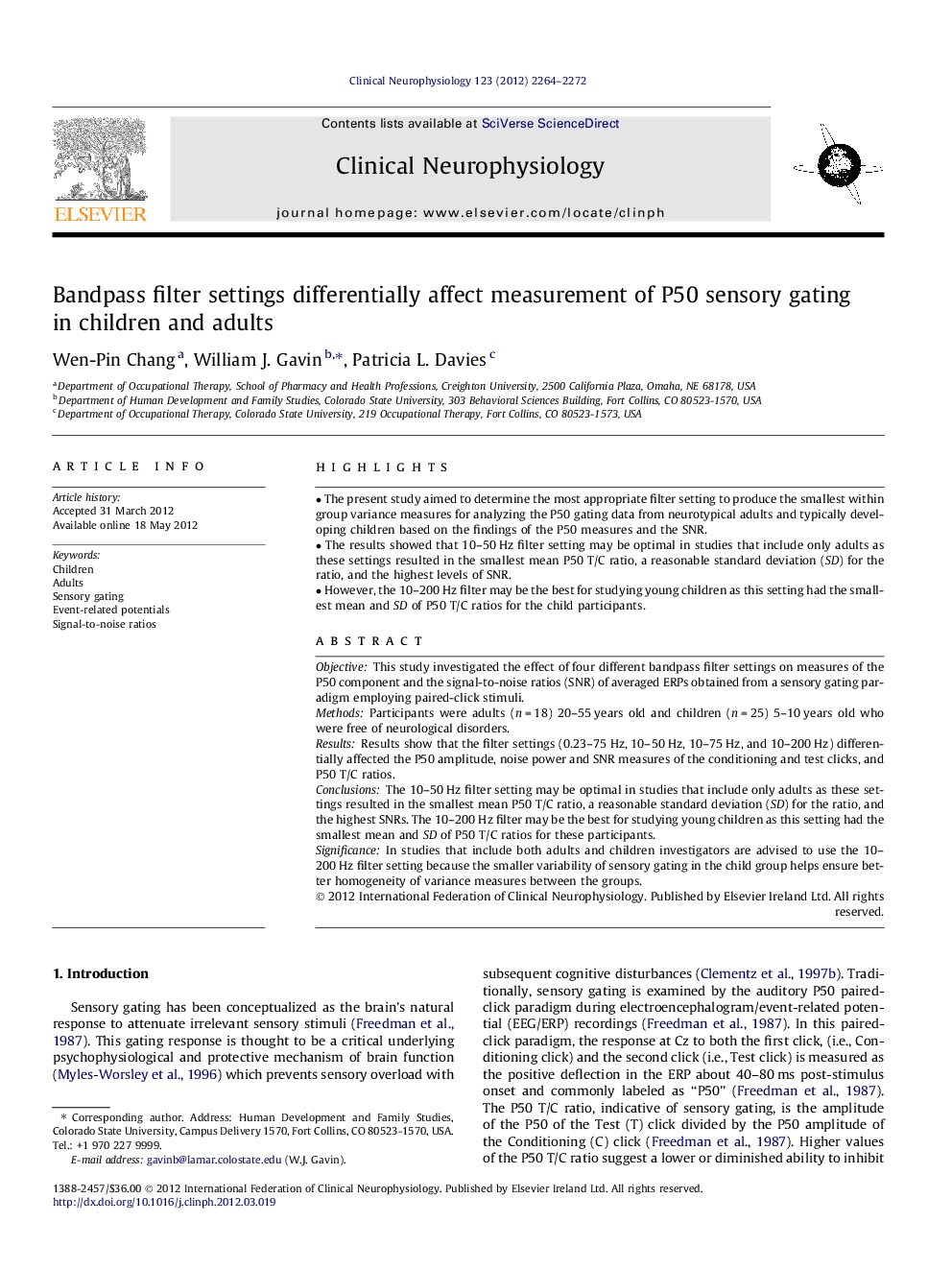| کد مقاله | کد نشریه | سال انتشار | مقاله انگلیسی | نسخه تمام متن |
|---|---|---|---|---|
| 3043118 | 1184971 | 2012 | 9 صفحه PDF | دانلود رایگان |

ObjectiveThis study investigated the effect of four different bandpass filter settings on measures of the P50 component and the signal-to-noise ratios (SNR) of averaged ERPs obtained from a sensory gating paradigm employing paired-click stimuli.MethodsParticipants were adults (n = 18) 20–55 years old and children (n = 25) 5–10 years old who were free of neurological disorders.ResultsResults show that the filter settings (0.23–75 Hz, 10–50 Hz, 10–75 Hz, and 10–200 Hz) differentially affected the P50 amplitude, noise power and SNR measures of the conditioning and test clicks, and P50 T/C ratios.ConclusionsThe 10–50 Hz filter setting may be optimal in studies that include only adults as these settings resulted in the smallest mean P50 T/C ratio, a reasonable standard deviation (SD) for the ratio, and the highest SNRs. The 10–200 Hz filter may be the best for studying young children as this setting had the smallest mean and SD of P50 T/C ratios for these participants.SignificanceIn studies that include both adults and children investigators are advised to use the 10–200 Hz filter setting because the smaller variability of sensory gating in the child group helps ensure better homogeneity of variance measures between the groups.
► The present study aimed to determine the most appropriate filter setting to produce the smallest within group variance measures for analyzing the P50 gating data from neurotypical adults and typically developing children based on the findings of the P50 measures and the SNR.
► The results showed that 10–50 Hz filter setting may be optimal in studies that include only adults as these settings resulted in the smallest mean P50 T/C ratio, a reasonable standard deviation (SD) for the ratio, and the highest levels of SNR.
► However, the 10–200 Hz filter may be the best for studying young children as this setting had the smallest mean and SD of P50 T/C ratios for the child participants.
Journal: Clinical Neurophysiology - Volume 123, Issue 11, November 2012, Pages 2264–2272